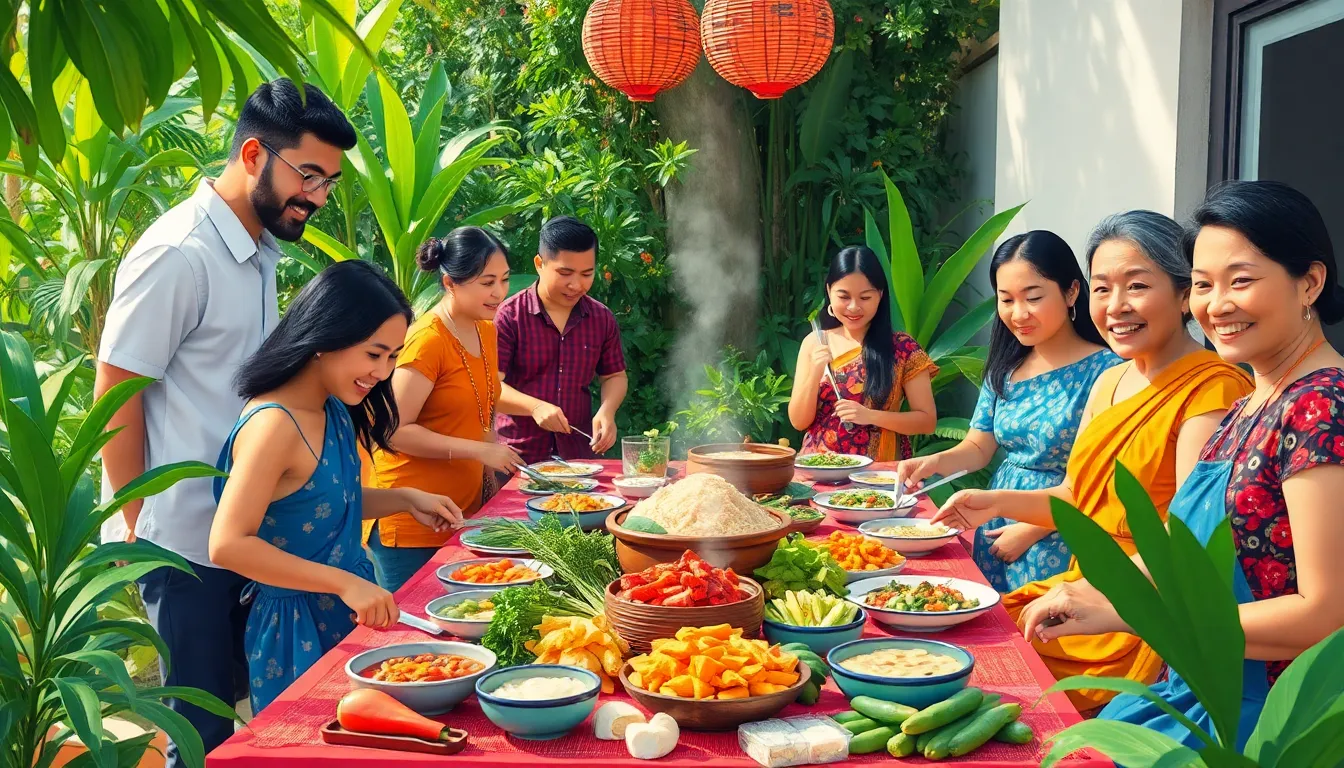In the world of culinary delights, few dishes can spark curiosity like falotani. This unique treat, often shrouded in mystery, combines flavors and textures that dance on the palate. Imagine sinking your teeth into something that’s not just food but an experience—it’s like a flavor rollercoaster without the nausea!
Falotani
Falotani is a distinctive dish that showcases a remarkable blend of ingredients, each contributing to its unique flavor profile. This culinary creation often includes a base of grains, such as rice or quinoa, combined with a variety of vegetables and spices. Textures play a vital role, with crunchy elements often paired alongside softer components, enhancing the overall experience.
Cooks typically prepare falotani using fresh, locally sourced ingredients. They focus on balancing flavors, incorporating savory, sweet, and spicy notes. Bold seasonings such as garlic and cumin frequently add depth to the dish, appealing to those who appreciate a complex taste.
Falotani represents more than just a meal; it embodies cultural traditions and family gatherings. It often finds a place at celebrations, where sharing the dish brings people together. Different regions have their own variations, reflecting local tastes and customs.
A vibrant presentation enhances falotani’s appeal. Colorful vegetables contrast beautifully against the base, inviting diners to savor each bite. Pairing the dish with traditional sauces or chutneys elevates the flavor experience further.
Exploring falotani offers a journey through diverse textures and tastes, capturing the essence of culinary art. This dish provides a memorable experience, engaging multiple senses and inviting culinary exploration.
The Origin of Falotani

Falotani boasts a rich history and cultural significance that combines culinary art and tradition.
Historical Background
Falotani likely traces its roots to ancient culinary practices, where grains like rice or quinoa served as staple foods. In various regions, elders used these ingredients in recipes, adapting flavors based on available resources. Historical records confirm regional variations influenced falotani’s development, with spices and herbs passed down through generations. Many communities embraced communal cooking methods, emphasizing togetherness and bonding over food. Each area’s unique landscape contributed localized ingredients, shaping distinct versions of falotani.
Cultural Significance
Falotani holds deep cultural importance within numerous communities, often found at gatherings and celebrations. Families frequently prepare this dish as part of their culinary heritage, reinforcing traditions. Sharing falotani during communal events fosters unity among participants, inviting conversation and interaction. Vibrant presentations reflect local artistry, showcasing the care invested in each preparation. Through its complex flavors, falotani acts as a symbol of identity, connecting individuals to their history and heritage, making it more than just food—it’s a narrative of culture and community.
Key Ingredients in Falotani
Falotani showcases a diverse range of ingredients that contribute to its unique flavor profile. This dish often brings together various elements, creating a harmonious blend that delights the palate.
Traditional Components
Traditional falotani typically features a base of grains like rice or quinoa, which provide nourishment and texture. Fresh vegetables such as bell peppers, carrots, and spinach add a lively burst of color and crispness. Additionally, aromatic spices including garlic and cumin impart depth and richness, enhancing the overall taste. Herbs like parsley or cilantro serve as finishing touches, elevating the dish with their fresh aromas. Each traditional component plays a vital role in creating a cohesive culinary experience.
Modern Variations
Modern adaptations of falotani incorporate a wide range of ingredients to cater to diverse tastes. Quinoa may replace rice in some versions, providing a gluten-free alternative. Roasted vegetables like zucchini and sweet potatoes frequently make an appearance, contributing to a richer texture and flavor. Innovative chefs often incorporate proteins, such as grilled chicken or chickpeas, turning falotani into a complete meal. Bold flavors from sauces like tahini or yogurt dressing elevate modern variations further. Each of these changes reflects current culinary trends while preserving the essence of this beloved dish.
How to Prepare Falotani
Preparing falotani involves several key steps that result in a delightful dish. Each step contributes to the unique flavor profile and vibrant presentation.
Step-by-Step Recipe
- Cook grains like rice or quinoa according to package instructions.
- Chop fresh vegetables such as bell peppers, carrots, and spinach into bite-sized pieces.
- Heat olive oil in a skillet, then add garlic for flavor.
- Sauté vegetables until tender, about 5 to 7 minutes.
- Combine cooked grains with sautéed vegetables in a large bowl.
- Season the mixture with spices like cumin, salt, and pepper.
- Stir in additional proteins, such as grilled chicken or chickpeas, if desired.
- Serve with colorful sauces or chutneys for added flavor.
Tips for Perfecting Falotani
- Use fresh, local ingredients whenever possible for enhanced flavor.
- Experiment with spices to find a perfect balance between savory and spicy.
- Avoid overcooking vegetables to maintain their crunchy texture.
- Customize proteins to cater to dietary preferences, ensuring variety in servings.
- Arrange the dish with colorful vegetables for an appealing presentation.
- Drizzle sauces generously to enrich the overall taste experience.
- Allow flavors to meld by letting it sit for a few minutes before serving.
- Consider using leftovers creatively, transforming them into new meals.
The Beauty of Culinary Creativity
Falotani stands as a testament to the beauty of culinary creativity. Its vibrant flavors and textures invite exploration and enjoyment, making it a dish that resonates with both tradition and modern tastes. The way it brings people together during celebrations highlights its role in fostering community and connection.
As cooks experiment with various ingredients and techniques, falotani continues to evolve while retaining its cultural roots. This adaptability ensures it remains a beloved choice for many. Whether enjoyed at a family gathering or as a personal culinary adventure, falotani promises to deliver an unforgettable experience that delights the palate and nourishes the soul.


More Stories
How Material Innovation Is Influencing Contemporary Design Objects
How Automation and Smart Tools Are Transforming Architectural Practice
Why Turnkey Sweepstakes Software Is Catching On Fast